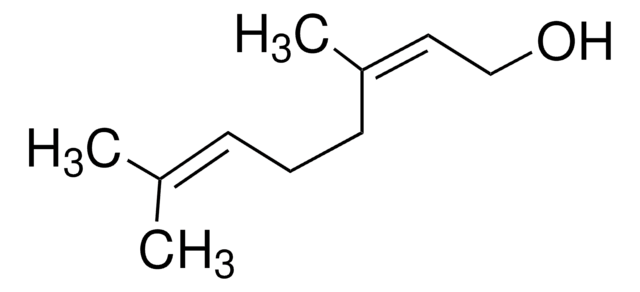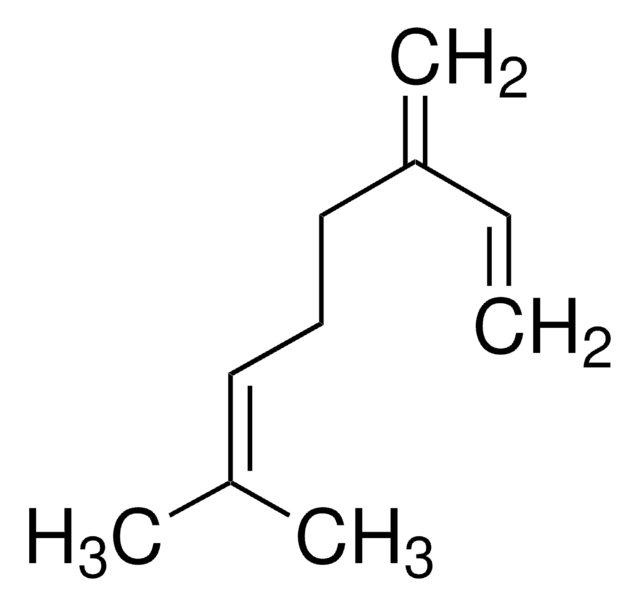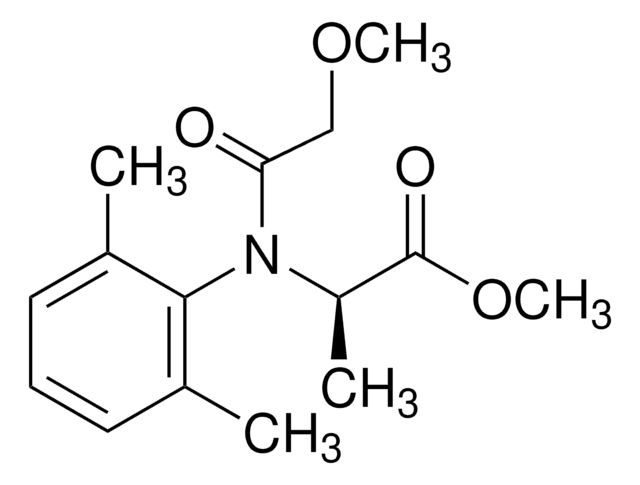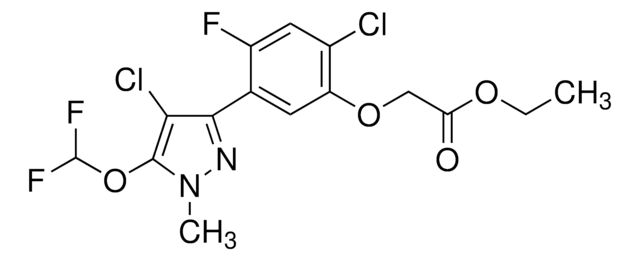50949
Nerol
analytical standard
Synonym(e):
Nerol, cis-3,7-Dimethyl-2,6-octadien-1-ol
About This Item
Empfohlene Produkte
Qualität
analytical standard
Qualitätsniveau
Assay
≥97.0% (GC)
Haltbarkeit
limited shelf life, expiry date on the label
Methode(n)
HPLC: suitable
gas chromatography (GC): suitable
Brechungsindex
n20/D 1.467-1.478
n20/D 1.474 (lit.)
bp
103-105 °C/9 mmHg (lit.)
Dichte
0.876 g/mL at 25 °C (lit.)
Anwendung(en)
cleaning products
cosmetics
flavors and fragrances
food and beverages
personal care
Format
neat
SMILES String
C\C(C)=C\CC\C(C)=C/CO
InChI
1S/C10H18O/c1-9(2)5-4-6-10(3)7-8-11/h5,7,11H,4,6,8H2,1-3H3/b10-7-
InChIKey
GLZPCOQZEFWAFX-YFHOEESVSA-N
Suchen Sie nach ähnlichen Produkten? Aufrufen Leitfaden zum Produktvergleich
Verwandte Kategorien
Allgemeine Beschreibung
Anwendung
- e-cigarette refill solutions by high performance liquid chromatography-tandem mass spectrometry with electrospray ionization (HPLC-ESI-MS/MS) as well as gas chromatography (GC) coupled to MS/MS operating under the electron impact (EI) mode and multiple reaction monitoring (MRM) mode of detection.
- Honeybush tea (Cyclopia spp.) by headspace solid phase microextraction (HS-SPME) and comprehensive two-dimensional gas chromatography (GC x GC) with flame ionization detection (FID) and a single stage modulator.
- Hanzhong black tea (Camellia sinesis) by solid phase extraction (SPE) and GC coupled to MS as well as olfactometry.
- Wine by liquid-liquid extraction (LLE) and EI-GC-MS with selective ion monitoring (SIM) detection.
Signalwort
Warning
H-Sätze
Gefahreneinstufungen
Eye Irrit. 2 - Skin Irrit. 2 - Skin Sens. 1B
Lagerklassenschlüssel
10 - Combustible liquids
WGK
WGK 2
Flammpunkt (°F)
226.0 °F - closed cup
Flammpunkt (°C)
107.78 °C - closed cup
Hier finden Sie alle aktuellen Versionen:
Besitzen Sie dieses Produkt bereits?
In der Dokumentenbibliothek finden Sie die Dokumentation zu den Produkten, die Sie kürzlich erworben haben.
Kunden haben sich ebenfalls angesehen
Unser Team von Wissenschaftlern verfügt über Erfahrung in allen Forschungsbereichen einschließlich Life Science, Materialwissenschaften, chemischer Synthese, Chromatographie, Analytik und vielen mehr..
Setzen Sie sich mit dem technischen Dienst in Verbindung.









